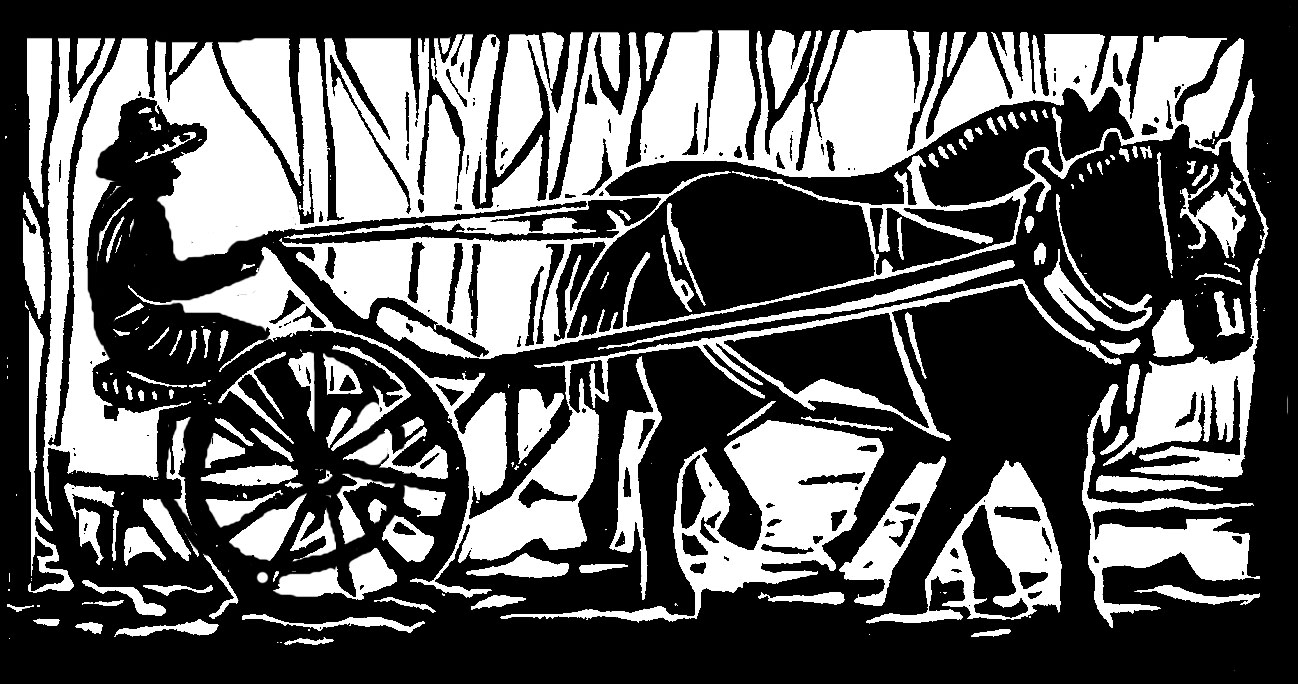This season, on our New Hampshire vegetable farm, we are well into the Marvelous Year of Maintenance. All the farming forces seem well pleased with the year's theme, and are doing their utmost to give us good fixing up projects.
First, there was the greenhouse: a big windstorm ripped off the plastic last month, which caused a three day flurry of panicked maintenance activities, replacing hipboards, tie-downs, and plastic.
Second, the manure spreader, or shall we sustainably say, the compost spreader: on the very first trip out to the field early this spring, there was a big bad noise. My fellow came walking back, minus the spreader and the horses. Then the two of us farmers returned to the scene, with two manure forks.
Sigh. It is a little daunting to have to empty the very first of many, many loads by hand. The horses didn't mind, however, as the whole operation is much slower-paced when compost dispersal depends on two forks and two disspirited farmers, rather than a wonderfully working spreader.
Once the spreader was cleared out, we could see that a link on the bed chain had broken, which meant taking out a corresponding link on the other side. We have made this repair before, but it was so long ago that we couldn't quite remember how to do it efficiently. Despite two come-alongs, two crowbars, two screwdrivers, two hammers, two farmers, and a lot of swear words at our disposal, plus a morning of concerted effort, we still didn't have it fixed.
Desperate, one farmer resorted to searching the Internet. Lo and behold, there was a Youtube video on taking links out of a too loose bed-chain, as well as several pieces of sage farmer advice. Just as the one farmer was collating the useful advice, the other farmer came triumphantly into the house.
“I fixed it!” he said.
“Great!” I answered. “I was just going to tell you how everyone says it's a lot easier to work the part you need to fix around to the bottom of the spreader, so that there's a lot of slack. Plus it's a good idea to have little kids to wiggle under the spreader so you don't have to.”
“Oh yeah, that makes sense. Oh well. Next time, we'll have to get some little kids. But I had another great idea, and it worked!”
“Yeah? What?”
“I took the grinder to it!”
“Oh,” I said, a little doubtful. “Is the chain really going to stay together after you've ground part of the link off?”
“Sure it will. I only shaved off a tiny bit. It'll work great.”
It did work great. For two loads.
On the fourth load, my fellow came back sans spreader, with horses.
“Yes?” I said.
“Pole broke. It's a good thing the horses listen well.”
“What happened?”
“Well, the pole broke, and the spreader stopped, and the horses kept going, and I leapt off the seat still holding the driving lines, and said 'Ho! Ho!' And the horses stopped.”
“Wow,” I said. “That must have been quite a leap."
"It was a really big leap," said my farmer fellow, looking a little pained.
I patted my good clever fellow on the back, and then I patted the good clever horses on their backs.
Luckily, we didn't have to unload the compost by hand to make this repair, and we had a new pole ready to go. The horses got a nice long rest in their stalls, and we tackled the project right away. We drilled holes to fit the bolts for the neck yoke and the evener, and then drilled one more hole, to connect the pole to the spreader itself. It was all pretty staightforward. Except. We couldn't get the bolt through the last hole we'd just drilled.
We wiggled it. We jiggled it. We kicked it and we pounded it and we cursed it. Nope. We drilled a little more here and a little more there, to widen the hole. Nope. It seemed so stupidly easy, yet it would not go, and we were hungry, and it was getting dark, and there were no handy little kids making us supper. We gave up.
The next morning my fellow was out early trying again. This time he used a smaller drill bit, and it worked just fine. Huh. What do you know. It's amazing what a little food and a little rest and the morning light will do for a project. Our spreader is fixed, for a while at least.
And our marvelous year of maintenance is off to an excellent start. The farming forces sure are helping us achieve our goal for the year. Why, the whole universe seems to be helping us break things so we can fix them. Isn't that nice.
Originally published in the Monadnock Shopper News, June 6 - June 13, 2018
